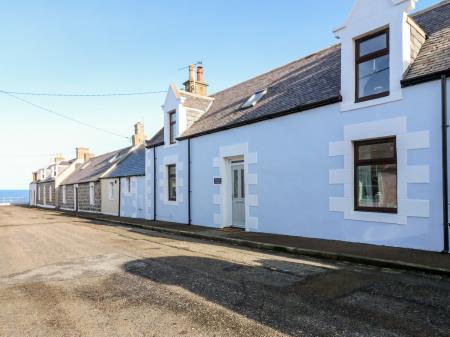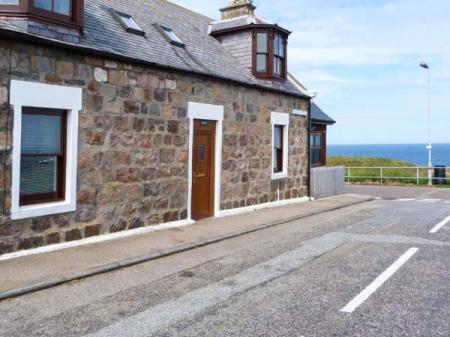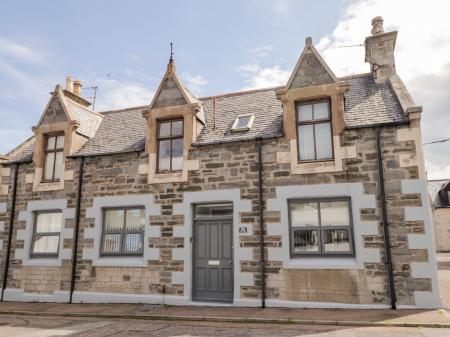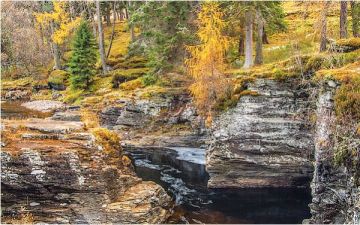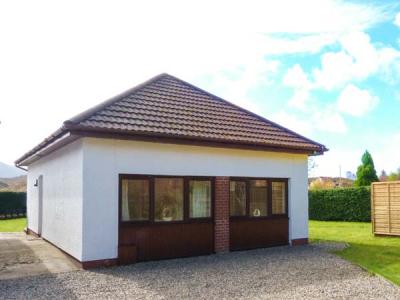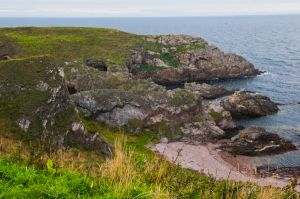
The high cliffs surrounding Portknockie harbour offered another possibility. The promontory stands to the west of Portknockie harbour, a short walk from the famous formation known as Bow Fiddle Rock. The clifftop site was occupied from as early as 1000 BC up to the coming of the Vikings around 1000 AD.
The bank encloses an inner area of about 70 metres by 15 metres. Archaeological work has revealed that there was a wooden stockade here during the Iron Age, which the Picts later replaced with a much stronger palisade wall of timber logs. The walls were burned at some time in the past, presumably in an invasion, though we do not know when, or by who.
The excavated walls have since been reburied, so there is really very little to see at Green Castle. The real star of the show is the scenery; Portknockie is one of my favourite places along the Grampian coast, with marvellous landscape.
The signposted Moray Coastal Path passes beside Green Castle, and there is easy parking on any of the streets leading down to the harbour.
Crathie Point Promontory Fort is about four miles away along the coast, close to the historic Findlater Castle ruins.
 We've 'tagged' this attraction information to help you find related historic attractions and learn more about major time periods mentioned.
We've 'tagged' this attraction information to help you find related historic attractions and learn more about major time periods mentioned.